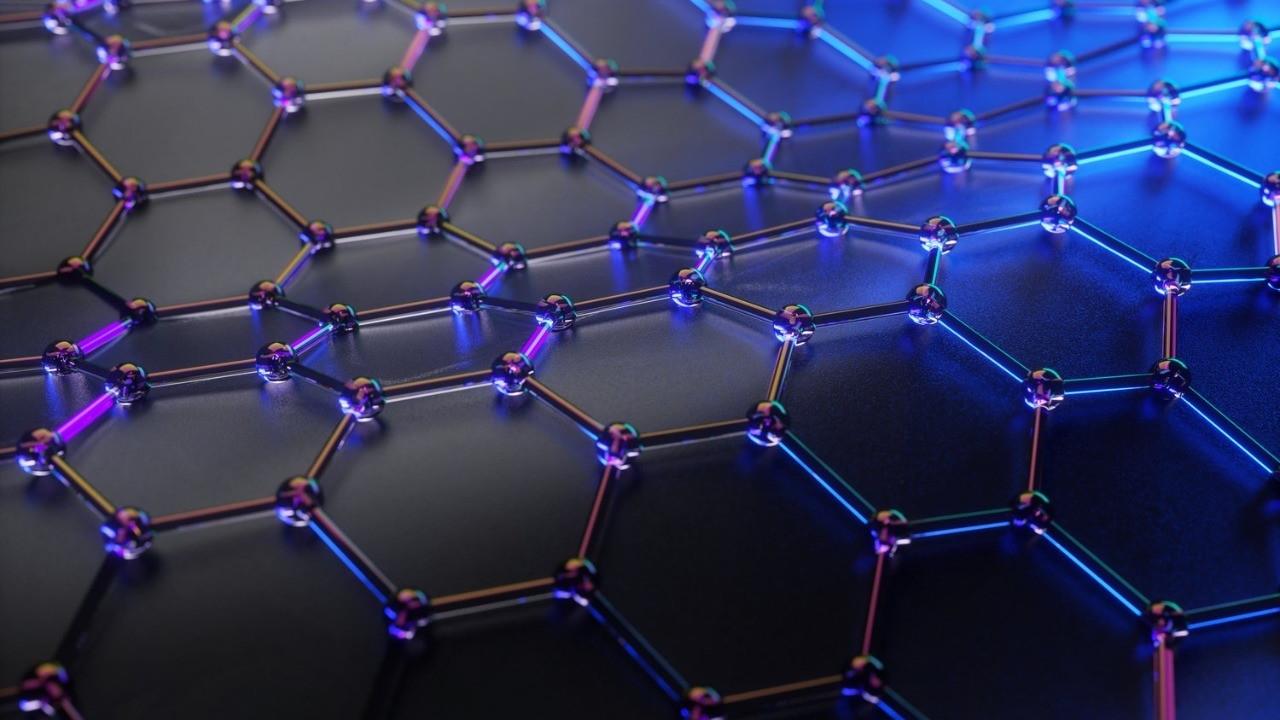Science News
& Faculty Articles
CODATA Proton Charge Radius; The History Of This Fundamental Measurement

Haramein’s holographic solution accurately predicted the mass and radius of the proton in 2012 [2, 3], resulting in a radius 4% smaller than the Standard Model and experiments gave at the time. This prediction that does not utilize adjusting parameters, was later confirmed at the Paul Scherrer Institute utilizing muons in a proton accelerator. Further experiments utilizing electrons confirmed the radius in 2017-2018. The value of the proton RMS charge radius has since been validated by the adjusted 2018 CODATA value, which is the standard for all fundamental physical constants.
By Dr. Inés Urdaneta / Physicist at Resonance Science Foundation
It’s been almost two years since the charge radius of the proton was finally confirmed experimentally by a September 2019 study from Eric Hessels [1], of York University in Canada, and his colleagues.
In his paper entitled Quantum gravity and the holographic mass (published in 2013, though the work was sent to...
The Universe Organizes in a Galactic Neuromorphic Network

Article by William Brown, Biophysicist, Resonance Science Foundation Research Scientist
The Universe Organizes in a Galactic Neuromorphic Network
The Quantitative Comparison Between the Neuronal Network and the Cosmic Web

A key observation in the science of a unified physics of reality is that the universe appears to follow a self-organizational patterning utilizing properties of holography and fractals. These two features of organizational structure in the universe are so ubiquitous that us researchers at the Resonance Science Foundation often refer to “holofractogramic physics” to simultaneously describe an organizational system that is both holographic and fractal in nature. This refers to two properties of universal organization that seem to be primary: holographic ordering of information—in which any subunit of a system contains information about the whole— and fractal ordering of structure.
What does “fractal ordering of...
Prediction of Giant Vortex in Liquid Light!

Article by Dr. Inés Urdaneta, Physicist, Resonance Science Foundation Research Scientist
Photo by Kenji Croman
Just as particles at the very small scale are governed by the strange laws of the quantum world, light can behave weird when placed in the proper conditions. The most intriguing is the case of liquid light that we had addressed in a former article entitled “Liquid light at room temperature”, where light interacts with matter, or more precisely, photons interact with electron-hole pairs – called excitons – in a semiconductor. These excitons impose a dipole moment, which combined with the dipole of the electromagnetic field, couples strongly the excitons and the photons. The result is a polariton, considered a quasiparticle, composed of half-light and half matter which behaves as a Bose Einstein condensate or superfluid even at room temperature. A superfluid behaves like a fluid with zero viscosity. Zero viscosity is equivalent to perpetual...
New Machine Learning Method Raises Questions on the Nature of Reality… Again

By Dr. Inés Urdaneta / Physicist at Resonance Science Foundation
Machine learning and artificial intelligence are increasingly taking the stage, with huge philosophical implications. We have been following this issue in our RSF science blog, first through the article Between the Holographic Approach and Data Science where we addressed the potential of trained artificial neural networks to replace our scientific models, and the possibility of reality being a numerical simulation was discussed. Somehow we had anticipated the work from Vitaly Vanchurin, from the University of Minnesota Duluth, proposing that we live in a neural network and affirming that only through neural networks we could find the theory of everything and grand unification theory. So, our second article entitled Is the universe a Neural network? addressed this later possibility.
Today it was published in Phys.org an article entitled New machine learning method raises question on nature of science which...
More Evidence of Collective Behavior at Cosmological Scale!

Image source here.
By Dr. Inés Urdaneta / Physicist at Resonance Science Foundation
Just a couple of years ago, astronomers and astrophysicists were baffled by the observation of a synchronized behavior in galaxies, which can not be explained by their individual gravitational fields. Such was the case of a study lead by Joon Hyeop Lee, an astronomer at the Korea Astronomy and Space Science Institute, and published in The Astrophysical Journal in October 2018, reporting hundreds of galaxies rotating in sync with the motions of galaxies that were tens of millions of light years away.
Given the fact that from our known theories, in principle it would be impossible that galaxies separated by megaparsecs (millions of light years) could directly interact with each other, their interaction happens across distances that are too large to be explained by their gravitational force. It is then speculated that some unacknowledged force must be acting.
This discovery came after the...
Graphene Proves That Brownian Motion Can Be A Source of Energy!

By Dr. Inés Urdaneta / Physicist at Resonance Science Foundation
Graphene, one of the most important nanomaterials developed so far, continues to surprise the scientific community. This time, thanks to the extraordinary phenomena found by a group of physicists from the University of Arkansas. We are talking specifically about the capacity to use the thermal motion of atoms in graphene as a source of energy!
In this recent work, published in Physical Review E under the title Fluctuation-induced current from freestanding graphene, the team of researchers have successfully developed a circuit capable of capturing graphene's thermal motion and converting it into an electrical current.
As it is said in this article: "The idea of harvesting energy from graphene is controversial because it refutes physicist Richard Feynman's well-known assertion that the thermal motion of atoms, known as Brownian motion, cannot do work. Thibado's team found that at room...
Is the Physical World a Neural Network?

By Dr. Inés Urdaneta / Physicist at Resonance Science Foundation
In a former RSF article entitled Between the Generalized Holographic approach and Data Science, we addressed the potential of trained artificial neural networks to replace our scientific models, and the possibility of reality being a numerical simulation was discussed. Somehow we had anticipated this next and very recent work from Vitaly Vanchurin, from the University of Minnesota Duluth, proposing that we live in a neural network. It is an audacious idea!
In our prior article we had anticipated the impact of artificial neural networks and deep machine learning … what we had not foreseen was that they would be used literally as the framework for the theory of everything! There is a saying: "better be a historian, than a prophet", meaning that a historian writes about past events, and so taking small risk, while a prophet takes a huge risk with his predictions. Though, we should not brag about this feat...
Blue And Green Colors Of Nature Are More Intense … Why?

By Dr. Inés Urdaneta / Physicist at Resonance Science Foundation
Image: Evan Leeson/Bob Peterson/lowjumpingfrog. None of these animals contain a single trace of blue pigment.
Colors in nature come mainly from three sources: pigments, structural colors, and bioluminescence.
Have you noticed that some colors are more intense than others in nature?
Such is the case of blue and green colors, compared to reds and the rest. The main reason is that blue and green can be structural colors, while the remaining colors seem to not be part of the team.
Structural coloring is the result of microscopically fine structured surfaces that interfere with visible light, sometimes in combination with pigments. For example, peacock tail feathers are brown pigmented, but because of their microscopic structure, they also reflect blue, turquoise and green light. And they are often iridescent. Thus, structural coloring is a classic optical effect of interference and diffraction, rather than a quantum...
Beyond Science Fiction! Extracting Energy from Black Holes

Image Credit: NASA/JPL-Caltech
By Dr. Inés Urdaneta, Resonance Science Foundation Research Scientist
In 1969, Roger Penrose proposed a method to extract rotational energy of a rotating black hole, and suggested that an advanced civilization could achieve it by lowering and then releasing a mass from a structure that is co-rotating with the black hole. The process would occur in the region just outside the event horizon, called the ergosphere, where frame-dragging is at its strongest, being able to tear apart an object; one part would enter the event horizon while the remaining one would be accelerated outwards with an additional impulse given by the rotational energy of the black hole. The excess energy calculated by Penrose was estimated to be 21 percent more than the incoming energy.
The process is brilliantly explained in this video:
Inspired by Penrose’s idea, Yakov Zel’dovich predicted in 1971 that quantum fluctuations and classical electromagnetic...
Does Spacetime Emerge From Entanglement?

By Dr. Inés Urdaneta / Physicist at Resonance Science Foundation
The question above could be preceded with the following one: Is space an illusion?
Since the magnitude of a force like electromagnetic and gravity between two objects is inversely proportional to the distance between them, it seems plausible to conclude objects only interact with other objects when they are close, and the closer they are, the stronger the interaction. For instance, when bringing two magnets towards each other, one can feel the increase in the rejection between them (if approached by the same pole) or attraction between them (if opposite polarity). And since the force can be felt when the objects are still not in contact, one could say that the force is mediated by a field. Fields spread out as they propagate outside of the object.
This dependence of forces and interactions upon distance is the main characteristic of the principle of locality. Locations and speeds of objects are...



